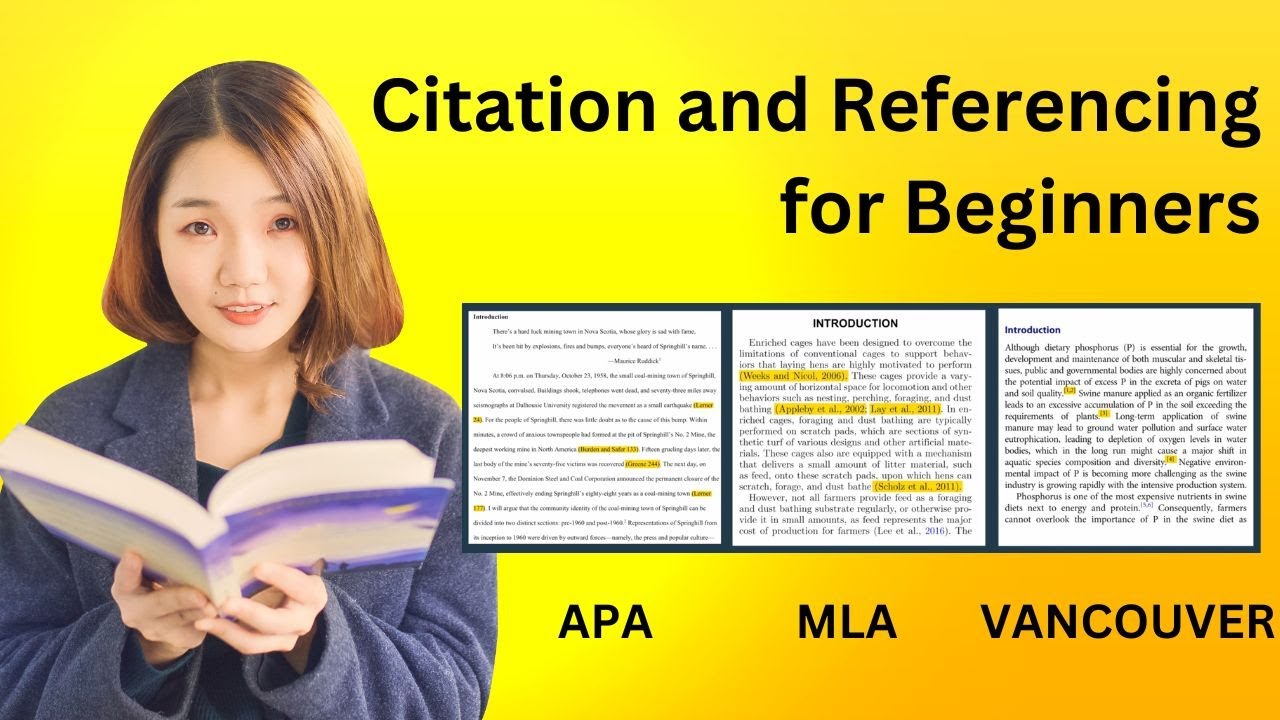O que é Plágio? - Plágio Acadêmico - Revista Científica Multidisciplinar Núcleo do Conhecimento
Summary
TLDRThis video explores the concept of plagiarism in academic writing, emphasizing the importance of proper citation. It covers direct and indirect citations, the risks of autoplagiarism when reusing your own work, and the need for transparent referencing in all forms of academic content. The speaker stresses the importance of using plagiarism detection tools and adhering to citation guidelines to maintain academic integrity. The video encourages scholars to be mindful of their sources and to avoid presenting others' ideas as their own, promoting ethical research practices and intellectual honesty.
Takeaways
- 😀 Plagiarism is the unauthorized appropriation of someone else's intellectual work, whether it's partial or full copying, or even rewording and translating texts.
- 😀 Direct citation involves quoting the exact words of an author, with proper page numbers and formatting to distinguish the citation from your own text.
- 😀 Indirect citation is paraphrasing an author's ideas in your own words while still crediting the original author, but be careful not to rely too heavily on one source.
- 😀 Citing directly from a source requires special formatting (e.g., indentation, smaller font size, single spacing) to clearly indicate it's not your own work.
- 😀 If you base your entire work on direct citations, it loses originality and can be considered as plagiarism, as it doesn't contribute new ideas.
- 😀 Self-plagiarism occurs when you reuse your own previously published work without proper citation, which can be seen as unethical or misleading.
- 😀 When using your own published work, you must follow the same citation rules as you would for any external author to avoid self-plagiarism.
- 😀 Academic institutions and journals use anti-plagiarism software to detect copied content, including translated works, so ensure your citations are properly formatted.
- 😀 If you present your work in conferences or on the internet, be cautious as it becomes publicly available and may be flagged as plagiarized in the future.
- 😀 To avoid plagiarism, it's important to regularly review your published work online and ensure all sources are properly credited to maintain academic integrity.
Q & A
What is plagiarism?
-Plagiarism is the improper appropriation or copying of someone else's intellectual work without proper attribution. It can be either intentional or unintentional and involves using someone else's ideas or text as your own.
What are the different types of plagiarism discussed in the script?
-The script mentions two main types of plagiarism: direct plagiarism, which involves copying text verbatim, and indirect plagiarism, which involves paraphrasing someone else's ideas without giving proper credit.
What is the difference between direct and indirect citations?
-A direct citation involves quoting a text exactly as it is, using quotation marks and providing a specific page reference. An indirect citation involves rephrasing or summarizing an author's ideas in your own words, still requiring the author's name and the year of publication.
Why is it important to properly cite sources in academic work?
-Proper citation ensures that the original authors receive credit for their ideas and work. It also helps avoid accusations of plagiarism, which can harm your academic reputation.
Can you provide an example of indirect citation?
-Yes, if you were discussing 'biopolitics' in your work, you might refer to an author like Foucault, paraphrase their ideas on biopolitics, and then cite the author and publication year to show where the idea originated.
What is self-plagiarism?
-Self-plagiarism occurs when you reuse your own previously published work without proper citation. Even though it's your work, it must be treated the same way as any other author's work when used in new research.
How should you cite your previous work to avoid self-plagiarism?
-When citing your own prior work, you must follow the same citation rules as you would for other authors, ensuring the proper attribution and context for your earlier work.
What are the consequences of failing to properly cite a source?
-Failing to cite sources properly can lead to accusations of plagiarism, which can result in academic penalties, damage to your credibility, and even legal consequences in severe cases.
How can anti-plagiarism software help avoid plagiarism?
-Anti-plagiarism software checks your work for similarities with other published materials. It helps identify potential instances of plagiarism, including paraphrasing or improperly quoted text, ensuring your work remains original.
What should you do if you’ve reused content from a public presentation or class material?
-If you reuse content from a presentation or class material that has already been published or made publicly available, treat it as if it were another author's work and cite it properly to avoid self-plagiarism.
Outlines

Cette section est réservée aux utilisateurs payants. Améliorez votre compte pour accéder à cette section.
Améliorer maintenantMindmap

Cette section est réservée aux utilisateurs payants. Améliorez votre compte pour accéder à cette section.
Améliorer maintenantKeywords

Cette section est réservée aux utilisateurs payants. Améliorez votre compte pour accéder à cette section.
Améliorer maintenantHighlights

Cette section est réservée aux utilisateurs payants. Améliorez votre compte pour accéder à cette section.
Améliorer maintenantTranscripts

Cette section est réservée aux utilisateurs payants. Améliorez votre compte pour accéder à cette section.
Améliorer maintenantVoir Plus de Vidéos Connexes

Citation and Referencing for Beginners Part II

MAHASISWA WAJIB NONTON! APA SIH KUTIPAN ITU?!

Avoid Plagiarism Playlist Introduction | Scribbr 🎓

How to Avoid Plagiarism_MK Seminar Ekonomi Syariah

正しいコピペ(引用)の仕方・引用文献の書き方【レポート・卒論・論文の書き方 】

Cara Ampuh Menurunkan Plagiasi: Tips Curang vs Semi Curang vs Cara Paling Aman
5.0 / 5 (0 votes)
